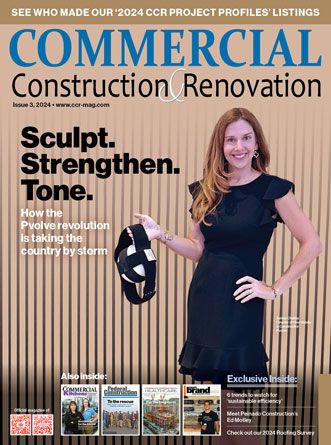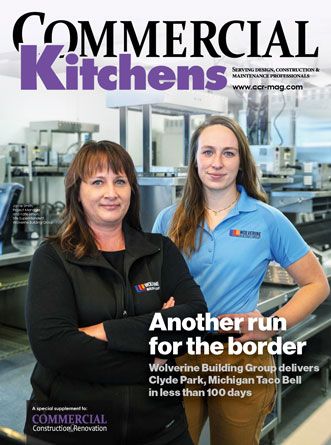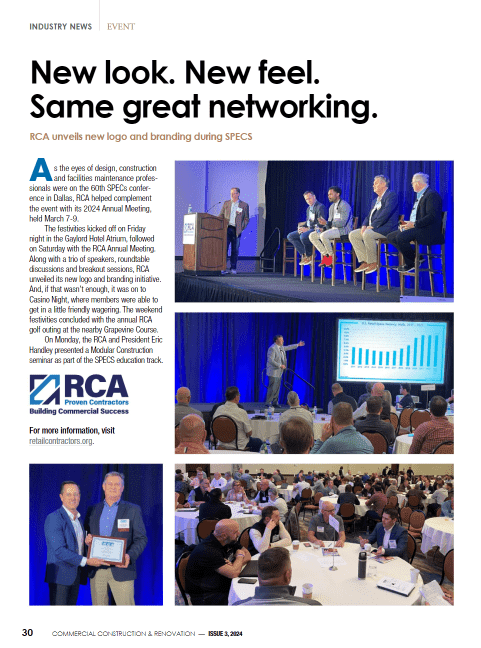 As the flooring contractor, you’re one of the last people to “touch” the floor. The floor covering you install is just the top layer of a deep stack of materials and other people’s efforts – but if moisture problems occur, who gets the first call? You. Did you pour the concrete too? You’re definitely getting the first call.
As the flooring contractor, you’re one of the last people to “touch” the floor. The floor covering you install is just the top layer of a deep stack of materials and other people’s efforts – but if moisture problems occur, who gets the first call? You. Did you pour the concrete too? You’re definitely getting the first call.
The frustrating part is that the occurrence of a moisture-related failure may have been out of your control. Even so, there are a number of ways you can be proactive and avoid being pressured to install flooring on concrete that isn’t confirmed to be sufficiently dry. In some cases, it’s a matter of better understanding of the concrete and the chemical processes that influence moisture. In others, there are steps under your direct control that you can take to measure a slab’s moisture content before you lay your flooring.
Now you know…
A great deal occurs on the floor before you get there, which places it outside your control to change. Yet the more you know, the better equipped you are to make correct decisions when it comes to completing your duties. So here’s a closer look at some of the key issues that affect concrete’s moisture content and how long it will take to dry.
Concrete mix being used – The specific components, and their ratios, within a concrete mix have a direct effect on moisture. The ratio of water to cement and other aggregates in the mix has the largest impact. Clearly, a higher proportion of water to other elements translates to longer drying time. But erring on the low side when adding water will cause cracking in the floor once the concrete dries. Also, keep in mind that certain aggregates affect how the concrete dries as well. If you know the mixture used at your worksite, that’s a good starting place to understand the state of the concrete.
 Slab thickness – Thicker slabs may take longer to dry as the moisture within the slab may take longer to move up through the slab in order to evaporate.
Slab thickness – Thicker slabs may take longer to dry as the moisture within the slab may take longer to move up through the slab in order to evaporate.
Concrete troweling – If the troweling compacts the upper layers of wet concrete too much, it can act as a vapor retarder on the surface of the slab. High blade angles and high blade speeds can have the same result. The wet concrete should be troweled with care. Rushing the troweling process can lead to longer drying times.
Curation is hydration – This is often a tricky one. Curing is often conflated with drying, so many consider curing a part of drying. It’s not. Curation is the chemical process that occurs when water bonds with the cement. That’s why it’s hydration. Curing is solidifying the water into the other elements. This bound water isn’t liquid; it’s infused in the solid as part of the concrete. You want to know what the curing process was on the concrete at your worksite. How much water was added? Did they use a curing blanket to help trap moisture for a while? Understanding how a specific slab was cured will inform your understanding of the potential moisture levels within it.
Concrete drying process – The real source of confusion regarding curing and drying is that both processes are happening at the same time. The short story on drying concrete is that the water within the concrete leaves in phases. First, the liquid water evaporates. Then, the moisture within the slab starts to move up to the surface, so it can eventually evaporate. This is what’s happening to the water that isn’t bonding with the concrete as part of the curing process. The speed at which this other water can evaporate is basically the speed at which the concrete is drying. A number of elements have a direct effect on how quickly moisture can evaporate. The good news is that you will have some influence over some of them.
Steps you can take
Manage the ambient conditions around the concrete slab: Three variables control how quickly a concrete slab will dry:
- The air temperature
- The relative humidity (RH) in the air
- The movement of the air
For moisture to evaporate, it has to go somewhere. Where? Into the air. This is why the air conditions have such great impact on drying times. More specifically, the RH in the air, put simply, tells us how much moisture the current air conditions can hold. A RH of 85 percent means the air is mostly saturated with moisture. There isn’t much more moisture it can take. When the air’s RH is high, drying slows down because the moisture has nowhere to go.
Conversely, when the RH is lower, more moisture can escape the concrete. Unfortunately, the air’s RH isn’t always constant throughout the drying process. If there are wild fluctuations, the concrete may actually start reabsorbing moisture out of the air if it’s internal RH is lower than the air’s RH.
The air’s temperature is important because of its relationship with the air’s RH. High temperatures provide more potential for the water to evaporate, which speeds up drying. Furthermore, warmer temperatures also have a higher dew point, which means it can hold more moisture vapor than cold air.
Air flow is needed to move the evaporated moisture out of the area so it doesn’t resettle on the surface of the slab. This happens often and is just one reason why surface moisture tests, like the calcium chloride (CaCl) test and handheld meters, can’t give an accurate reading of a concrete slab’s actual moisture condition.
Some worksites will use different equipment to affect the ambient conditions, whether it’s a dehumidifier or fans, or even a desiccant treatment to extract moisture. You want to be part of the discussion establishing the ambient conditions under which the slab will be drying. This will help you more accurately forecast an expected drying time.
Conduct accurate concrete moisture condition testing: Forecasting is important, and assists the planning process. But make no mistake – nothing replaces accurate testing of the slab’s actual moisture condition.
As discussed above, the ambient conditions have great impact on when, how fast, and where moisture evaporates. The whole process is working to pull the moisture out from the depths of the concrete slab, where it’s hiding. Thus, the only accurate way to assess a slab’s overall moisture condition is to test below the surface of the slab.
The critical data point, in terms of whether the slab is sufficiently dry now, isn’t the moisture vapor emission rate (MVER), but what’s the RH within the slab. MVER tries to measure speed. The RH tells you the actual moisture condition. More importantly, it gives you an accurate way to predict what the RH of the slab will be once it’s sealed and no more water can evaporate. This is the RH percentage upon which your flooring will have to stick and sit for the long term.
Once the concrete is sealed (low permeable floor finish is installed), the moisture within it will equilibrate. Scientific studies have revealed that measuring RH at 40% depth on an on-grade concrete slab provides the most accurate reading of what the RH of the concrete will be once it equilibrates.
Before you agree to install the floor covering that will make the concrete beautiful for the long-term, conduct the right tests for accurate assessment of the slab’s actual condition and ability to hold your flooring.
To get started off right, make sure you can insert yourself into the process as early as possible to manage drying conditions and understand the work that has already been done to impact expected drying times.
______________________________________________________________
Jason has 20-plus years’ experience in sales and sales management in a spectrum of industries and has successfully launched a variety of products to the market, including the original Rapid RH® concrete moisture tests. He currently works with Wagner Meters as our Rapid RH® product sales manager.







 The 2024 virtual Men’s Round Table will be held Q4, 2024, date TBD.
The 2024 virtual Men’s Round Table will be held Q4, 2024, date TBD.











